Fifty years ago, the party and state leaders of the time gathered at the Kossuth Square metro station for a big celebration. After a long construction period, on Friday, 22 December 1972, at 4 p.m., the second, final section of the east-west subway was handed over.
The timing was no accident, as it was the 100th anniversary of the adoption of the law declaring the unification of Budapest, but it might have been more important for those gathered that the fiftieth anniversary of the founding of the Soviet Union was celebrated in Moscow at that time - remember, the country was then completely under Soviet influence.
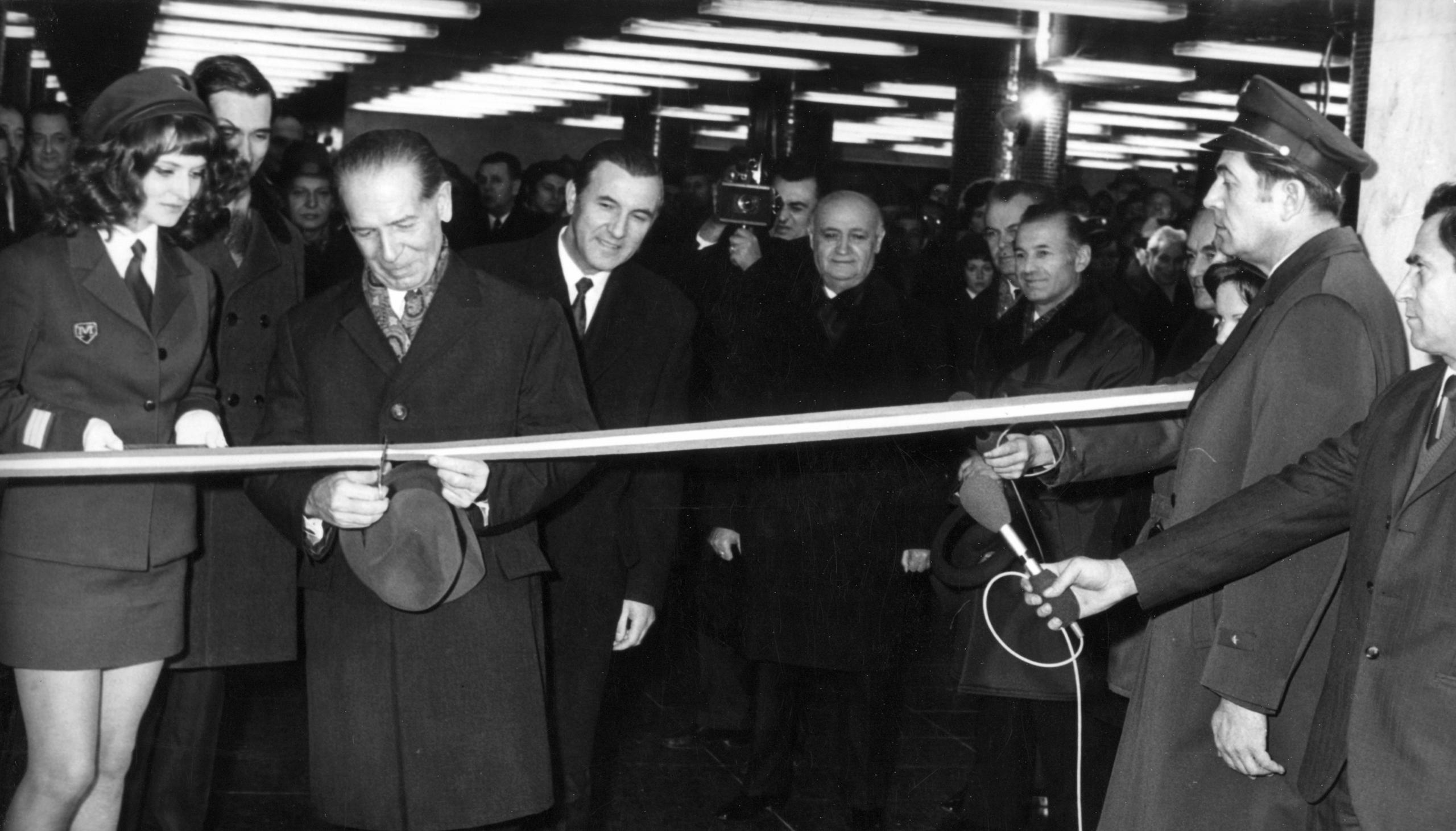
The moment of handover, Prime Minister Jenő Fock cuts the ribbon (Photo: Fortepan/Nr.: 212481)
The metro was largely built with Russian technology according to Soviet metro construction principles, with Soviet drill shields, Soviet cars, and Soviet escalators working at the stations. This relationship was well illustrated by the words of Zoltán Szépvölgyi, the President of the Socialist City Council, which was summarised in the 23 December 1972 issue of Esti Hírlap as follows:
"On behalf of the people of Budapest and the city council, Zoltán Szépvölgyi expressed sincere thanks to the party and the government for the moral and financial support. He thanked the Soviet companies that delivered the escalators and motorcars on time, accurately and in excellent quality."
The underground had a very deep tunnel, as it also served air defence purposes, and it still serves today. In addition, according to the original ideas, the metro would have had a railway exit at both the Déli (Southern) and Keleti (Eastern) stations, which would have connected them to the railway network, because the east-west metro was built with such a structure gauge that it would have accommodated railway cars. Remember: the metro was built during the Cold War, and connecting the two halves of the country underground with a railway was an important aspect. In the end, the railway connection was only partially built.
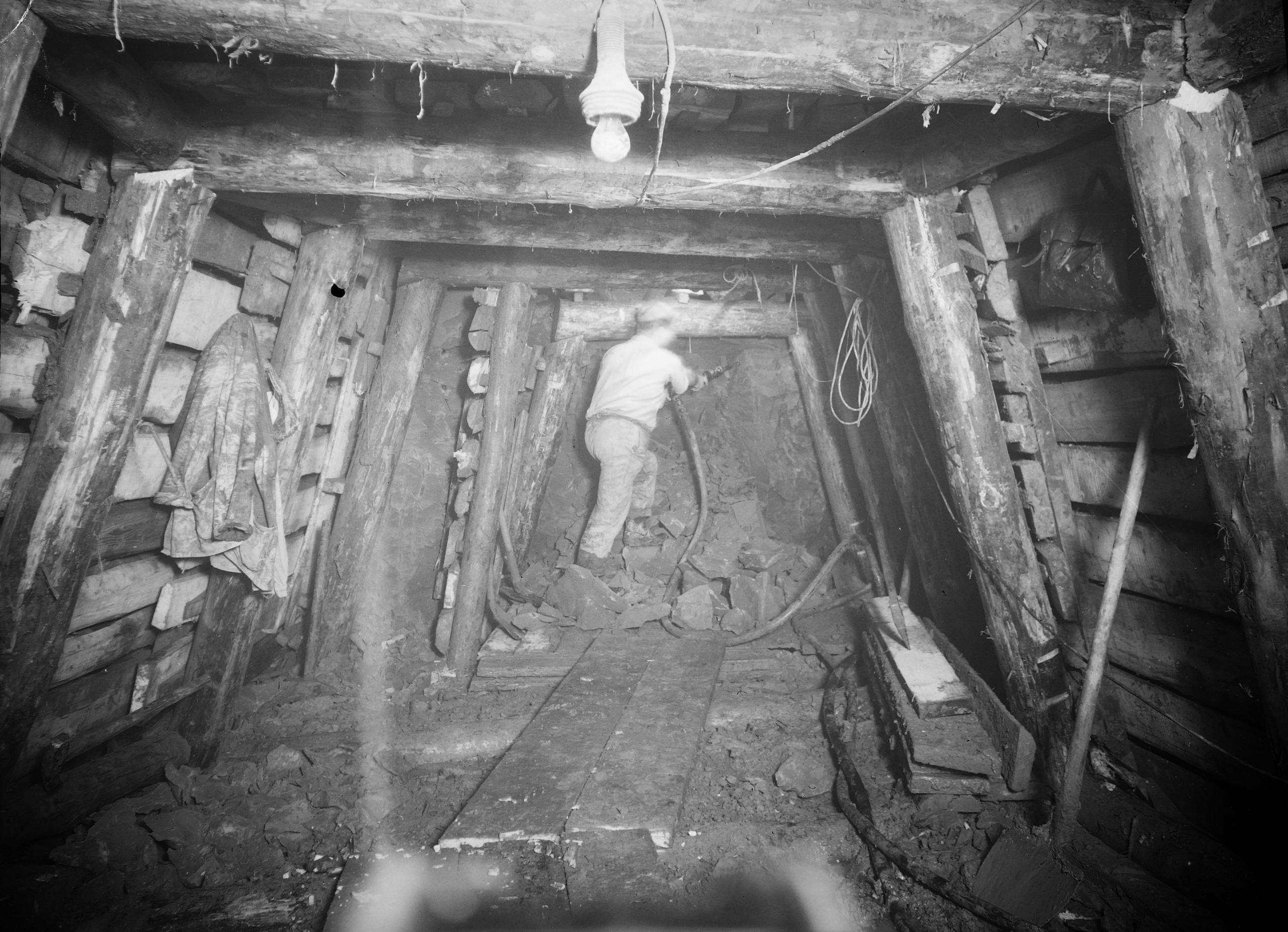
The construction of the subway in the 1950s, using rudimentary methods (Photo: Fortepan/Uvaterv)
The plans for the construction of the metro in Budapest date back to the 19th century, in the last decades of the previous century there were already plans for real underground high-speed rail transport, but the investment did not start until the beginning of the 1950s. As part of the first five-year plan adopted in 1949, which determined the economic life of the country, the construction of the metro became a major investment, and it had a prestige value for the communist government, and enormous resources were devoted to this construction.
The goal was to have the section between Deák Square and Népstadion completed by 1954, and then the entire line to Déli Railway Station by 1955. The plans were more or less ready since in the early 1940s they planned to build the underground railway network on a similar route, they were only modified.
However, they did not have the necessary industrial background and the appropriate equipment for the quick, less-than-a-few-years construction, so they started the works with spades, shovels and often horse-drawn carts, which the propaganda extolled to the skies.
However, the balloon burst relatively quickly, the promised Soviet drilling shields did not arrive on time, and by 1954 only a third of the tunnels were completed. 2 billion HUF (510 billion in today's value) was earmarked for the entire investment, and the amount was later increased to 2.7 billion, but the country simply could not bear the costs at that time. However, politics changed in the meantime, Mátyás Rákosi failed, and Imre Nagy became the Prime Minister, who relaxed the system a bit and restrained the forced industrialisation. As part of this, the investment was stopped.
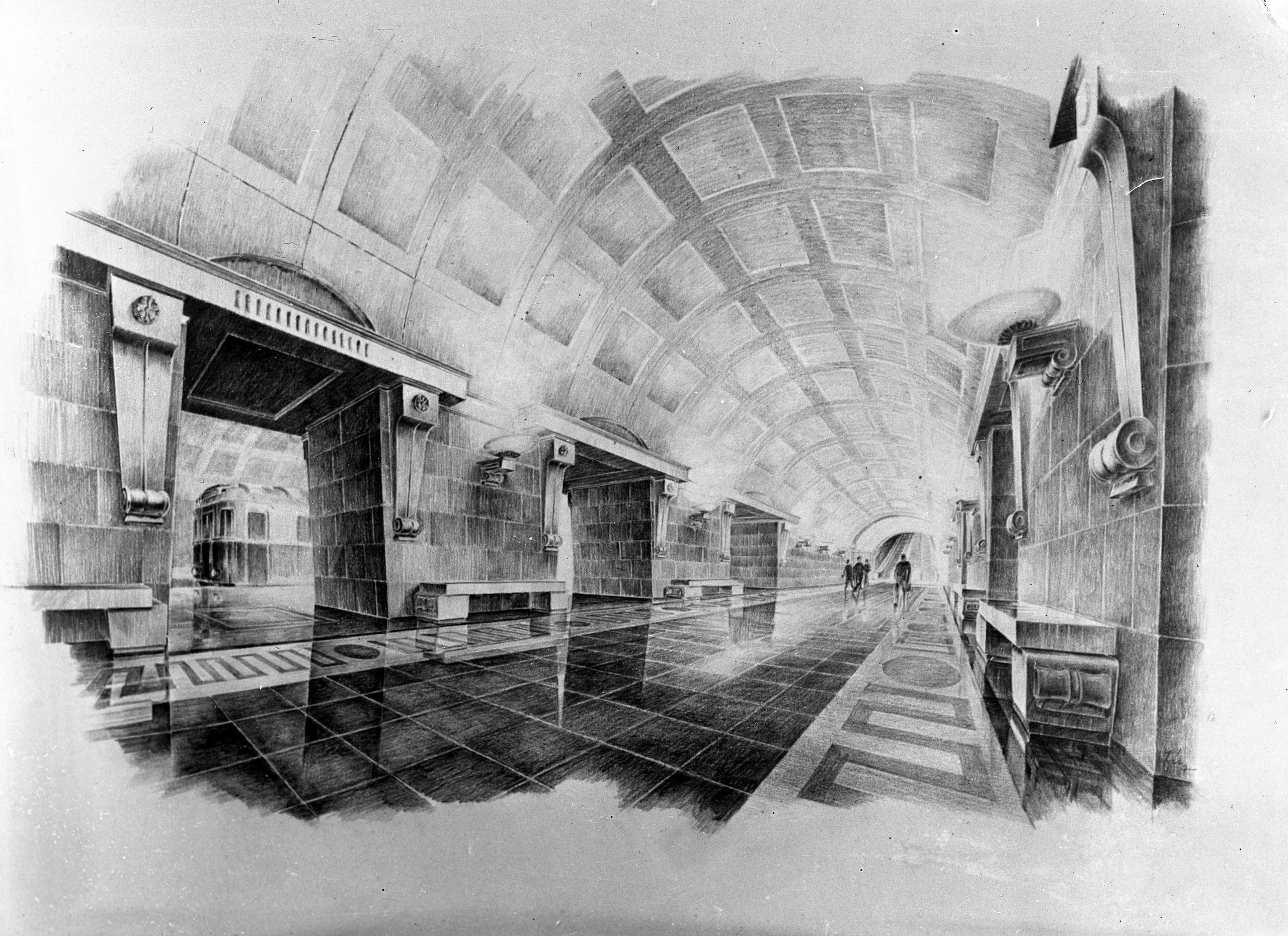
The station according to the original plans, the example was the Moscow metro (Photo: Fortepan/Uvaterv)
In the following years, the tunnels were empty, they could not do many things with them. The decision to continue was made in 1959, but at that time only conservation and slow, experimental construction was taking place (due to which the Rókus Hospital almost collapsed). The more serious work started in 1963, and it still took 7 years to hand over the first phase.
The line became longer, it reached Örs Vezér Square, originally the metro would have ended at the Népstadion, and the Astoria station was newly included among the stations, which had to be built in the already existing metro line built in the 1950s. The Blaha Lujza Square underpass was also not included in the original plans, according to the original idea, the escalators would have started from the street level.
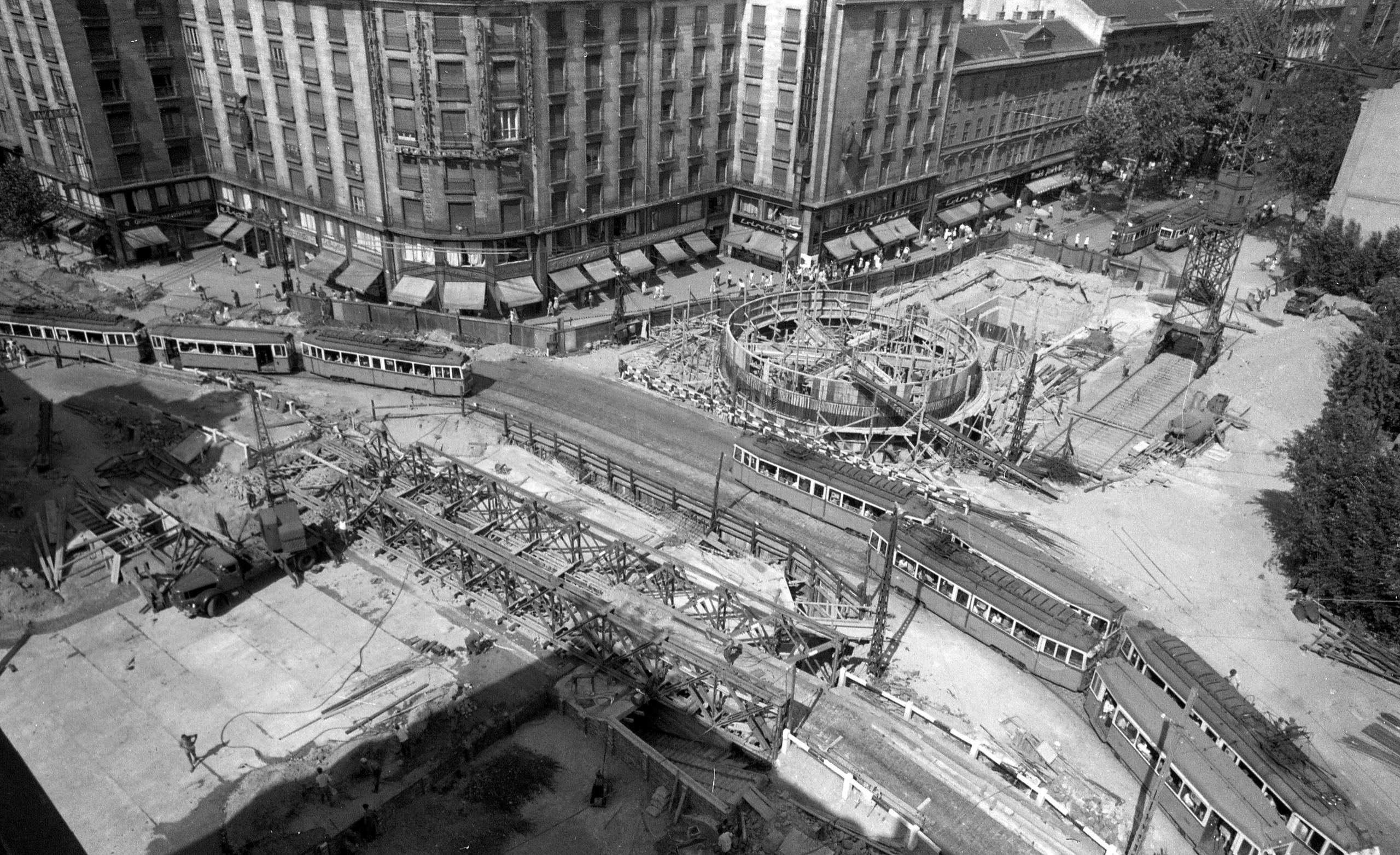
The construction of the Astoria metro station in the 1960s (photo: Fortepan/Főmterv)
The first section between Örs Vezér Square and Deák Square was opened in 1970, the next section, which goes to Déli Railway Station, i.e., under the Danube, was completed two years later, in December 1972, which is a great achievement in light of the fact that the construction took place under normal circumstances, without the propagandistic euphoria of the 1950s, and it still managed to be completed a year ahead of schedule.
However, the handover of the metro on 22 December 1972 was a big event, on that day Hungarian Television broadcasted "From the Örs Vezér Square to the Déli Railway Station. The Inauguration of the Metro" program from 4:00 p.m. to 5:30 p.m. But on the same day, at prime time, from 8:00 p.m., it broadcast a special 45-minute program related to the inauguration of the subway (on the experimental channel 2, people could watch the Swan Lake ballet performed by the Vienna Staatsoper). So, on Friday evening, the Hungarian population got to know the history of the construction and inauguration of the metro.

Map of the finished metro at the Örs Vezér Square station (Photo: Fortepan/Nr.: 212507)
18 of the builders were honoured before the inauguration, three of them received the gold grade of the Order of the Red Banner of Labour, and fifteen of them received the silver or bronze grade. The traffic did not start that day, only the next morning, on 23 December, at five o'clock in the morning.
Since then, metro 2 has been one of the most important transport axes in Budapest, and also a shelter, which hopefully will never be needed.
Cover photo: The metro tunnel at the Déli Railway Station (Photo: Fortepan/Nr.: 212493)

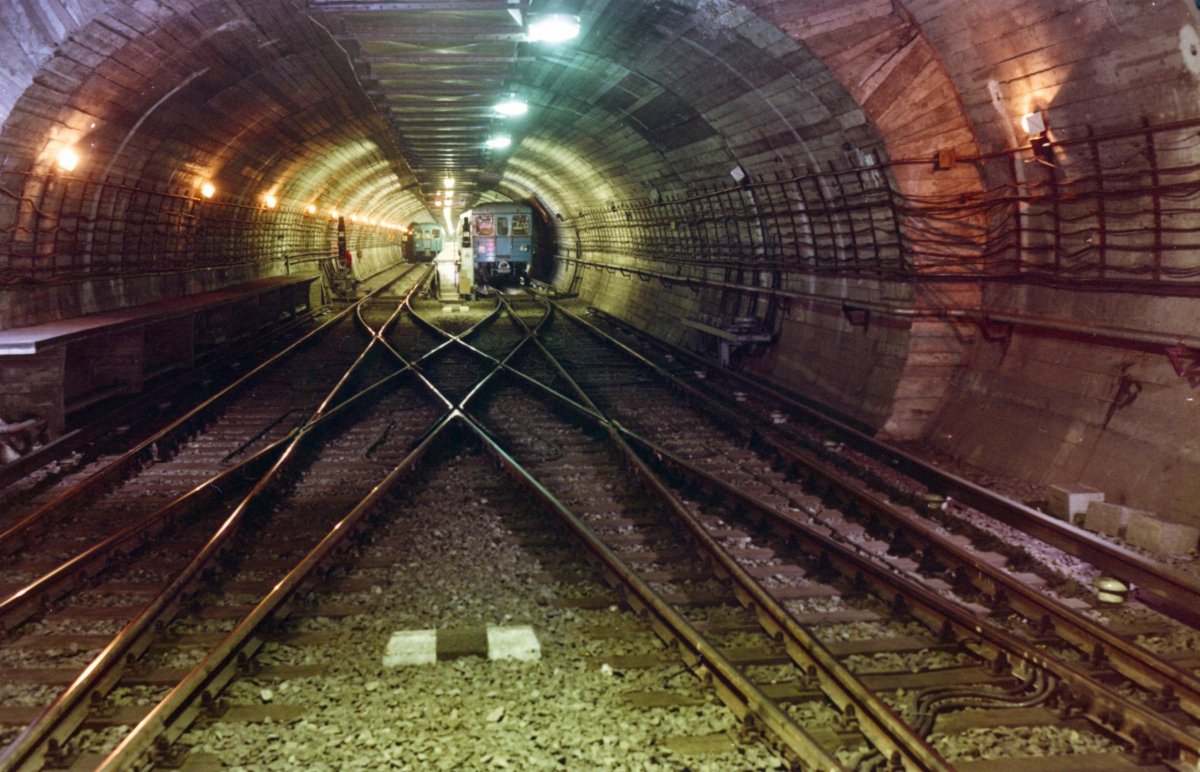


































Hozzászólások
Log in or register to comment!
Login Registration